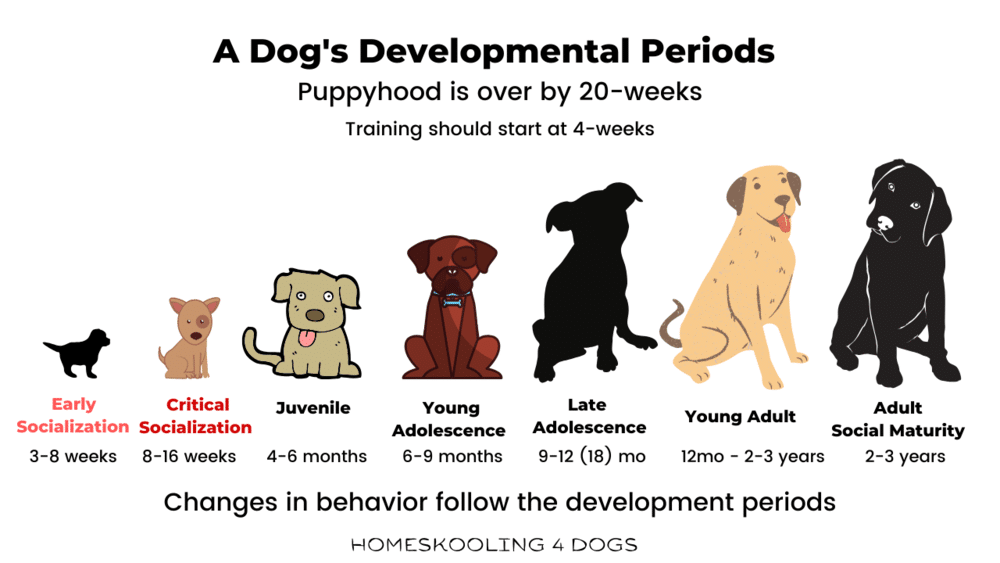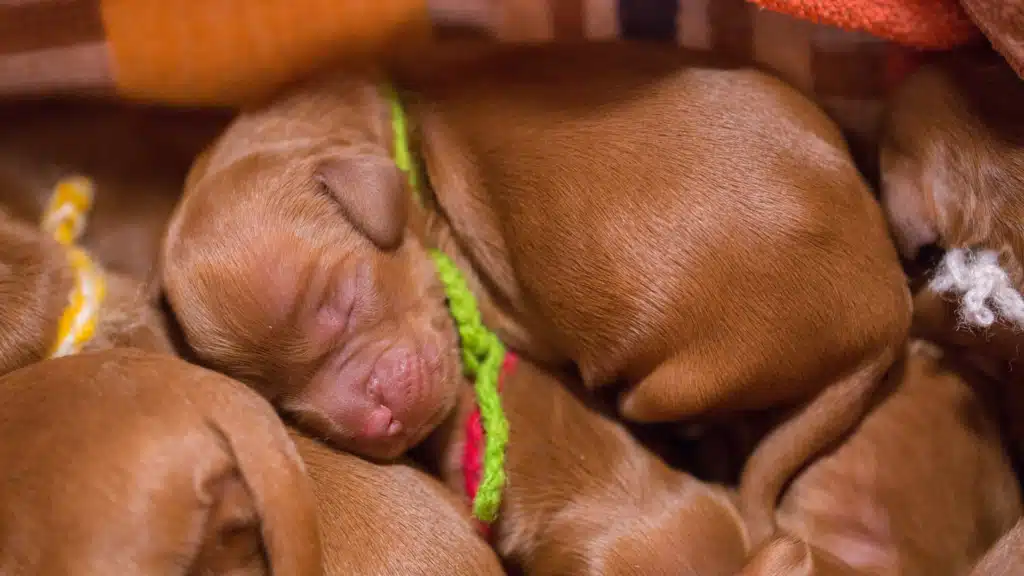Uncover the Truth Behind Doberman Litter Sizes
Doberman Pinschers, renowned for their glossy coat, muscular physique and regal demeanour, are treasured by many. Not only do these majestic dogs have an attractive appearance, but they also possess great intelligence and loyalty, characteristics that make them so desirable. But how big can a Doberman’s litter be? Let us dig deeper to uncover the secret of Doberman pup quantities in each litter size.
Short Summary
Average Doberman Pinscher litter size is typically 6-8 puppies, though it can vary based on genetics, parental health and selective breeding.
Genetics play a prominent role in determining litter sizes while parental health is an essential factor to consider before breeding.
Preparing for delivery involves creating a safe birthing area and having necessary supplies available. Larger litters may present challenges with nutrition, socialization & training of all puppies.
Average Litter Size of Doberman Pinschers

When it comes to breeding Doberman Pinschers or potentially becoming an owner of one, questions about litter size come into play. It’s key information that can give valuable insights in regards to the entire process of raising a litter from this breed. So what exactly is the standard for number of puppies per litter? Speaking, when all conditions are met health-wise and age wise with both parents, six to eight pups at birth should be expected due to ideal timing during conception.
Beyond factors such as genetics, fitness level amongst parents, and proper mating season, there could very well affect how many newborns arise out of each individual puppy birth, bringing potential changes on either side (more/less). Due importance needs to be given. Placed on selecting young quality stock plus ensuring they remain healthy while also bearing in mind pertinent dates so as procuring maximum numbers when producing these much loved canine companions called ‘dobies’.
Common Range of Puppies

The size of a Doberman litter usually ranges between 6 and 8 puppies on average. The number can vary greatly with one to twelve puppies possible depending on factors like genetic composition, parental health status, and selective breeding techniques used. Genetics in particular have an enormous impact as they determine what kind of traits are passed down from parent to offspring – affecting the amount of pups present within a given litter.
Factors Influencing Litter Size
Litter size in Doberman breeding is affected by many of the same factors as with other dog breeds. Age, health and genetics are all essential components that can influence litter numbers while breed size also has a role to play. Parental wellbeing significantly impacts how large litters will be. If one or both parents have poor health, then fewer puppies may be born whereas good physical condition typically increases potential for larger litters being produced from each litter cycle. The mother’s and father’s overall state should not be overlooked when it comes to producing dogs through doberman breeding methods.
The Role of Genetics in Determining Litter Sizes

The litter size of a dog breed, such as the Doberman, is greatly impacted by genetics. As female dobermans grow older, there tends to be a decline in fertility, which has an effect on how many puppies are born with each litter. Breeders should consider any genetic health issues that may arise and conduct pre-breeding tests to ensure they will get healthy litters when selecting studs for their breeds. When dealing with larger sized litters, it brings about its own set of challenges including making sure all pups have enough nourishment and proper instruction/socialization due to having more puppies than usual from one single litter.
Inherited Traits
Litter size can be heavily influenced by the inherited characteristics of various breeds. For example, Dobermans with a single functioning ovary may have smaller litters due to their polyestrous sexuality. This means they experience multiple heat cycles over a yearly period. Other genetic factors could also affect litter size for both individual dogs and other dog types alike.
The legacy created by Louis Dobermann – who wanted to cultivate loyal and protective dogs – should be kept in mind when breeders use these traits to better inform them about how best produce healthy puppies from larger litters where possible. By understanding all the elements that can contribute to different sizes of brood, we are able to keep his vision alive within every new generation of dobermans bred each year.
Selective Breeding
The litter size of offspring can be affected by selective breeding, which is the process that involves selecting parents based on certain characteristics. Through this approach, breeders are able to emphasize genes related to larger or smaller litters in order to manipulate said sizes as desired. Thus it’s important for them to understand inherited traits and practices associated with breeding so they have control over the number of puppies produced from a litter.
Importance of Parental Health in Litter Size

The health of dogs and the litter size are closely linked. The healthier both parents, the more likely it is for breeders to have larger litters. To get this desired result, dog owners should make sure that their animals remain in excellent condition before breeding them so they can be assured of a bigger batch of puppies with good overall well-being. Parents’ wellbeing is key when expecting maximum amount from a specific litter – if one neglects health concerns then an inadequate yield might ensue instead.
Mother’s Health
The number of puppies born in a litter depends greatly on the health and age of the mother. Typically, younger dams who are healthy will produce larger litters than older ones. It is essential for breeders to make sure that their female doberman has good general wellbeing before mating her so as to obtain satisfactory results when it comes down to litter size. The mother’s state must be taken into account very seriously if bigger litters are expected since without proper consideration there could possibly be negative consequences regarding how many pups she delivers at one time.
Father’s Health
The health of the father is thought to play a big role in how many puppies are born in a litter, with healthier sires correlating to larger litters. It cannot be said exactly what impact the father’s condition has on doberman pinschers specifically, but some medical conditions such as dilated cardiomyopathy and hip dysplasia could have an indirect effect on puppy counts for these dogs. The general overall well-being of Dobermans should be taken into consideration when thinking about their likely size of litters.
Preparing for a Doberman Litter

Breeders should pay attention to any genetic issues that may exist within the Doberman breed and ensure health examinations prior to breeding. Taking care of a dam during her pregnancy is essential – healthy nutrition, daily physical activity and regular vet visits are paramount. It’s vital for those planning a litter of Dobermans to be prepared with appropriate supplies in order to lend aid if needed while delivering the puppies.
Pre-Breeding Health Checks
Prior to breeding, it is advised by the American Kennel Club for Doberman Pinschers to have a series of health examinations completed. Such tests involve hip scoring, elbow grading, vision and hearing checks, as well as thyroid testing. DNA analysis should be undertaken on this breed specifically with regards to any genetic illnesses which may be carried over into their puppies from either parent dog. This helps ensure that potential litters would grow up healthy and provide wonderful family companionship due to good canine parenting choices made by responsible breeders before conception occurs. Pre-breeding screenings minimize or even preclude passing along medical complications thus making these pups suitable pet partners while at home.
Proper Care During Pregnancy
The Doberman Pinscher is a breed which needs proper care during its pregnancy for the litter size to stay healthy. It’s advised that they have regular exercise, veterinary visits and nourishment with high quality proteins including chicken, beef and fish. One should move onto puppy kibble in the week prior to delivery while also slightly upping their food intake so as to offer enough nutrition both for themselves and growing doberman pinschers’ puppies.
Preparing for Delivery
In order to be ready for the arrival of a Doberman litter, breeders must make sure they have both a safe and pleasant birthing space along with all the essential supplies. Supplies needed include items like thermometers, fresh towels, newspaper or anything else that could be requested by their veterinarian.
It is vital for those caring for this type of litters to prepare themselves in advance, having extra towels at hand if necessary and helping puppies relocate when warranted are just some tasks required from them during delivery time.
Lastly, creating an effective post-delivery care plan can help ensure that mother dog and her offspring receive adequate attention after giving birth so everybody involved is assured peace of mind knowing everything will proceed according to expectations established beforehand.
Challenges Associated with Larger Litters

Caring for a large litter of puppies is not without its difficulties. Bigger litters can bring with them issues like making sure each pup gets the necessary nourishment, attention and socialization as well as having sufficient food resources available to cater to all their needs. It could be difficult for the dam to provide enough milk for every puppy so extra feeding will have to come into play too. All in all, it’s important that appropriate care is taken when tending to larger litters of pups.
Feeding and Nutrition
Doberman Pinschers with larger litters require a reliable and balanced source of nutrition to ensure all puppies have adequate nourishment. To prevent malnourishment, the mother should be provided meals composed mainly of high quality proteins like chicken, beef, or fish, suggesting that puppy foods containing 26 percent protein are an appropriate choice for large breed doberman pups. By providing this nutritional content to her litter, it will help guarantee their healthy growth into adulthood.
Socialization and Training
When it comes to larger litters, socialization and training can become more difficult due to the greater number of puppies that need care. In order for puppies to be comfortable with new people, animals, and locations, they must go through a process called socialization. This also encourages them when learning basic commands or behaviors in puppy classes. Socializing is best done from an early age, taking them out to parks or dog friendly stores so they can get used to different situations. Also it is recommended you source your pup from either a breeder who has already started their level of acclimation before hand if possible, otherwise locating one at rescue should suffice too. Daily handling of pups along with nail trimming and brushing are significant measures needed also while raising young dogs effectively.
Summary
When considering the various factors that determine Doberman litter sizes, breeders and potential owners alike have much to consider. Genetics, parental health and informed breeding practices are all important elements in ensuring a safe arrival for each dog born in larger litters, although these may pose their own challenges. With comprehensive knowledge of how best to prepare ahead, people involved with the raising of each pup can be confident they will benefit from optimal health conditions throughout their development as well as guaranteed happiness on entering our world.
Frequently Asked Questions
How many puppies does a Doberman have in a litter?
Typically, a Doberman will produce a litter ranging from six to eight puppies. If all goes well with the birth process, these bundles of fur tend to be very lively and healthy. It is possible for them though to bring up as many as ten little ones at once into this world!
Which dog breed has the largest litter?
The Neapolitan mastiff holds the Guinness World Record for the largest litter, with 24 pups born in 2004 by the mother Tia. On average, dog litters range from 1 to 12 puppies. Although big dogs like Danes tend to have larger litters proportionate to their size.
How do you pick the best Doberman of the litter?
To locate the optimal Doberman from a litter, it is important to investigate each pup’s health and personality. Do this by jingling car keys near them while clucking your tongue – then pick the one that will fit best into your lifestyle.
How many times can you breed a Doberman?
The number of litters a Doberman may have throughout its lifespan is contingent on factors such as health and age. Taking these into consideration, it’s possible for the same dog to sire multiple broods in their home.
What factors influence the size of a Doberman litter?
The size of a Doberman litter can be affected by factors such as genetics, the health status of its parents and when breeding took place. All these elements must align for an optimal outcome.
